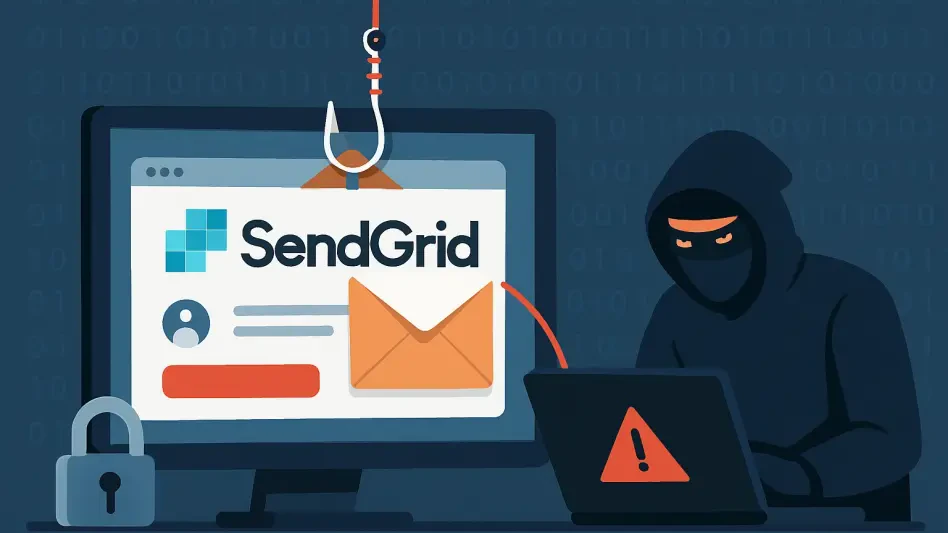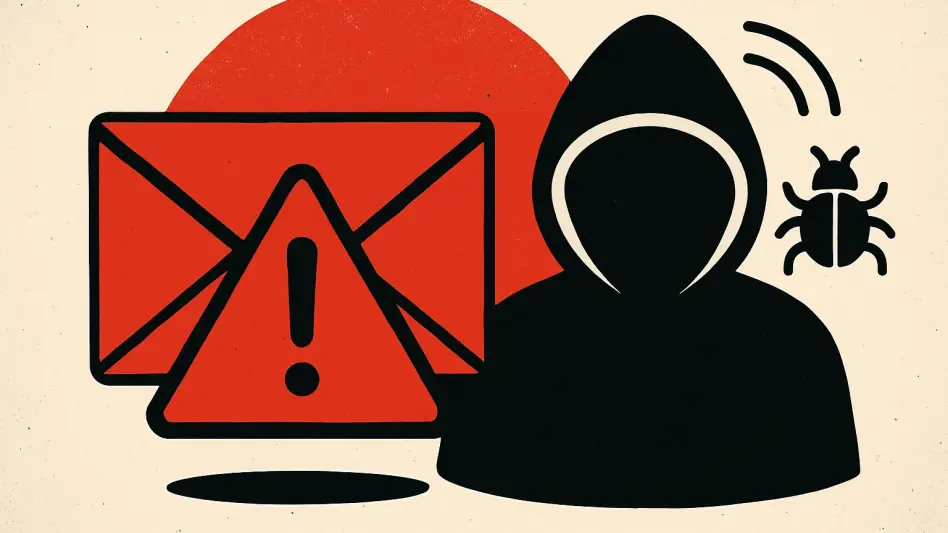In an era where digital trust is paramount, a disturbing trend has emerged as cybercriminals manipulate SendGrid, a widely respected cloud-based email service, to orchestrate highly deceptive phishing campaigns. These attacks, recently uncovered by cybersecurity experts, exploit the platform’s reputable status to bypass traditional email security filters, tricking unsuspecting users into surrendering sensitive credentials. The sophistication of these schemes lies not only in their technical execution but also in their psychological manipulation, preying on human emotions to drive action. As businesses and individuals increasingly rely on services like SendGrid for transactional and marketing communications, the potential for widespread damage from such credential harvesting efforts grows exponentially. This alarming development serves as a stark reminder of the evolving cyber threat landscape, where even trusted tools can be weaponized against their users, demanding heightened vigilance and robust countermeasures.
Unveiling the Threat Landscape
Deceptive Tactics and Emotional Triggers
The phishing campaigns leveraging SendGrid demonstrate a chilling level of cunning, with attackers crafting emails that closely mimic legitimate notifications from the service. By spoofing sender addresses and incorporating polished branding, these messages appear authentic at first glance, often evading initial suspicion. What sets these attacks apart is the use of psychological triggers tailored to provoke immediate responses from recipients. Variants of these emails play on urgency by warning of unauthorized logins from unfamiliar locations, complete with fabricated details like suspicious IP addresses to heighten alarm. Others dangle enticing offers, such as free upgrades to elite tiers, exploiting the allure of exclusive benefits. Each variant is meticulously designed to push users toward clicking malicious links, which ultimately lead to counterfeit login portals. This strategic blend of technical deception and emotional manipulation underscores the dangerous sophistication of modern phishing efforts, posing significant risks to personal and organizational security.
Technical Exploits Behind the Attacks
At the core of these phishing operations is the exploitation of open redirect vulnerabilities, a tactic that allows attackers to mask malicious destinations behind seemingly trusted domains. URLs such as url6849[.]destinpropertyexpert[.]com are abused to redirect users to phishing pages hosted on attacker-controlled sites like loginportalsg[.]com. These counterfeit pages replicate SendGrid’s interface with startling accuracy, making it challenging for even cautious users to spot the fraud. The use of such technical loopholes enables cybercriminals to bypass many standard security controls, as the initial links often appear benign to automated filters. This method not only amplifies the success rate of credential theft but also highlights a critical gap in current email security frameworks. As attackers continue to refine these techniques, the need for advanced detection tools and a keen eye for red flags, such as non-official URLs, becomes more pressing than ever for safeguarding sensitive information against these insidious threats.
Strategies for Defense and Mitigation
Building Robust Email Security Layers
Countering the sophisticated phishing campaigns exploiting SendGrid requires a multi-layered approach to email security that goes beyond traditional filters. Implementing advanced email authentication protocols and machine learning-based detection systems can help identify spoofed messages before they reach inboxes. These technologies analyze patterns in sender behavior and content anomalies to flag potential threats, even when attackers mimic legitimate branding. Additionally, organizations must prioritize continuous monitoring of email traffic to detect unusual activity, such as sudden spikes in redirect links or unfamiliar domains. By integrating these technical defenses, businesses can significantly reduce the risk of users interacting with malicious content. However, technology alone is not enough; it must be paired with proactive policies that limit the exposure of sensitive data through email channels. This comprehensive strategy is vital in an era where attackers exploit both technical vulnerabilities and human oversight to achieve their malicious goals.
Empowering Users Through Awareness and Training
Equally critical to technical defenses is the role of user education in combating phishing attacks. Training programs should focus on equipping individuals with the skills to recognize suspicious emails, particularly those that urge immediate action or offer unexpected rewards. Highlighting specific warning signs, such as discrepancies in URLs or unfamiliar sender details, can empower users to scrutinize messages more effectively. Regular simulations of phishing attempts can also provide practical experience, helping employees develop a reflexive caution toward questionable communications. Beyond recognition, enforcing multi-factor authentication across all accounts adds a crucial barrier, ensuring that even if credentials are compromised, unauthorized access remains unlikely. By fostering a culture of cybersecurity awareness and combining it with actionable safeguards, organizations can address the human element that attackers so often exploit. Reflecting on past campaigns, it became evident that these combined efforts were instrumental in reducing the impact of such deceptive schemes.
Looking Ahead to Stronger Protections
As phishing tactics evolve, the need for innovative solutions grows more apparent in efforts to secure digital environments. Reflecting on those challenges, it is clear that staying ahead of cybercriminals demands not just reactive measures but also forward-thinking strategies. Investing in real-time threat intelligence sharing among industry peers proves to be a game-changer, enabling faster identification of new attack patterns. Collaborating with cybersecurity experts to customize defense mechanisms tailored to specific threats is another step that fortifies protections. Scheduling in-depth assessments of existing security postures also helps uncover hidden vulnerabilities before they can be exploited. Moving forward, organizations should consider adopting these practices as part of a dynamic defense framework. By anticipating the next wave of phishing innovations and preparing accordingly, businesses can better shield their users and data from the relentless creativity of cyber adversaries.








